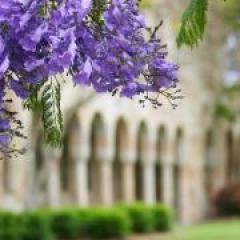All change in the land(scape) of a thousand gods: Beyond the Beyşehir Occupation Phase in Central Anatolia
Abstract
"Are you not my companion?
Give this tree over to me
and I will cut it"
The throne answered the king:
"cut it down, cut it down.”
The end of the second millennium BC saw a reordering of the Mediterranean political world with the end of several important Bronze Age polities, including the Hittite Kingdom based in Central Anatolia’s high plateau. Often referred to as ‘the land of a thousand gods’, the Hittite Kingdom had a complex pantheon of deities connected to places, events and atmospheric phenomena that invested the king with power. Wood charcoal analysis from Kaman-Kalehöyük in the central plateau, demonstrates a long history of woodland exploitation through the Bronze and Iron Ages, including clear evidence for unsustainable woodland exploitation in the LBA and a dramatic shift towards pine exploitation at the end of the second millennium, concurrent with the end of Hittite power in the region. The mid to later second millennium BC also saw the emergence of the Beyşehir Occupation Phase in Anatolian pollen diagrams, which signals the start of obvious anthropogenic impact on vegetation, including forest composition. Archaeobotanical evidence points to increasing human impact and modification of Anatolia’s native forests during this period. Drawing on these data, combined with historical evidence of religious and other practices, we argue while these changes can be seen as destructive and extractive, they also suggest evidence for resistance to forest use and its preservation. In our opinion, the most parsimonious explanation for such practices in the Bronze Age is the deliberate conservation of some regions as a result of Hittite beliefs in the divine qualities of places and their links to kingly power. The strengths and weaknesses of this idea will be reviewed.
Note that this paper was originally intended for presentation at the 2021 MAARC Conference but had to be withdrawn due to unforeseen circumstances.
About the presenter
 Andy Fairbairn is an archaeobotanist and archaeologist interested in ancient agriculture, foraging practice and past anthropogenic landscape change. He has worked in Turkey since 1999, publishing research on past farming practice and economic change in a range of sites including Neolithic Çatalhöyük East, Pınarbaşı and Canhasan III and Boncuklu, where he is the project co-director, as well as Bronze Age, Iron Age and Medieval occupations at Kaman Kalehöyük, Büklükale, Yassihöyük, Kültepe and Kinet Höyük. Andy studied at the Institute of Archaeology in London before working at The Museum of London, Cambridge University, The Australian National University and has been at UQ since 2006, where he is now Professor of Archaeology. He has published research on sites in the UK, central Europe, Jordan, Syria, Turkey, Papua New Guinea and Australia and is Associate Editor for the journal Vegetation History and Archaeobotany.
Andy Fairbairn is an archaeobotanist and archaeologist interested in ancient agriculture, foraging practice and past anthropogenic landscape change. He has worked in Turkey since 1999, publishing research on past farming practice and economic change in a range of sites including Neolithic Çatalhöyük East, Pınarbaşı and Canhasan III and Boncuklu, where he is the project co-director, as well as Bronze Age, Iron Age and Medieval occupations at Kaman Kalehöyük, Büklükale, Yassihöyük, Kültepe and Kinet Höyük. Andy studied at the Institute of Archaeology in London before working at The Museum of London, Cambridge University, The Australian National University and has been at UQ since 2006, where he is now Professor of Archaeology. He has published research on sites in the UK, central Europe, Jordan, Syria, Turkey, Papua New Guinea and Australia and is Associate Editor for the journal Vegetation History and Archaeobotany.
Contact j.kariwiga@uq.edu.au for meeting details.
Please be aware that we are still operating under Covid-19 regulations during public events. For those who will be attending, you will be asked to check in via UQ code as a condition of entry. Those who are feeling unwell, who have travelled in from overseas or a Covid-19 hotspot in the last 14 days or have been in contact with Covid-19 positive persons, are asked not to attend the seminar. Hand sanitizers will be provided for attendee use at venue.
About Archaeology Working Papers
The Working Papers in Archaeology seminar series provides a forum for dissemination of archaeological research and ideas amongst UQ archaeology students and staff. All students are invited to attend the series and postgraduate students, from honours upwards, are invited to present their research. The aim is to provide opportunities for students, staff and those from outside UQ, to present and discuss their work in an informal environment. It is hoped that anyone interested in current archaeological directions, both within and outside the School and University, will be able to attend and contribute to the series.
2025 Upcoming Sessions
| Date | Presenter |
|---|---|
| 8th August | Nicholas Hadnutt and Lincoln Morse |
| 15th August | Jane McMahon |
| 22nd August | Martin Gibbs |
| 29th August | Karen Cooke |
| 5th September | Shoshanna Grounds |
| 12th September | Meg Walker |
| 19th September | Marc Cheeseman |
| 26th September | Ladislav Nejman |



